It seems unimaginable today but for roughly the first 25 years of driving in Britain, you couldn’t just drive onto a forecourt, fill your car with fuel and then fill a basket with treats from M&S Simply Food. Petrol stations didn’t exist.
In the decades after the horse and cart made way for the motor and chassis, motorists could only buy petrol from chemists, hardware shops and hotels, as well as from garages. According to Historic England, the earliest petrol station, or filling station as they were known, was opened in November 1919 at Aldermaston, Berkshire by the Automobile Association (AA).
They were ideally placed to serve local communities. What seemed novel then seems quaint today. Local filling stations are vanishing from our roadsides, while global energy companies dominate the landscape.

While many are gone, they are not forgotten. Meanwhile, communities fight to save remaining historic structures while hobbyists – myself included – enjoy uncovering those that remain and sharing them with the wider world. So much so, I decided to write a book about it. Several, in fact. Super: Old, odd, interesting, obscure and abandoned filling stations takes readers on a trip down memory lane and reveals Britain’s vanishing local petrol stations, region by region.
Here are some of my favourites. If you have suggestions for others, please share them in the comments, below.
Compton Garage, Long Compton, Warwickshire
Queen Victoria was crowned, the first section of the Great Western Railway was opened, Dickens published Oliver Twist and, in the same year, 1837, this garage, in Long Compton, south Warwickshire, was built. The building looks to have been built as stabling, perhaps serving the 13th century church opposite. It’s a popular spot to take a picture. Traffic to London now uses the M40 and, thankfully, this place has retained its character. The pumps and signage are all original; one peeling sticker shows that two-star petrol was served here. Two-star was 92 octane and last sold around 1989. This garage still operates as a repair shop.
Catterlen Hall, Newton Reigny, Cumbria
This might be one of the oldest buildings used as a filling station, anywhere in the world. In Newton Reigny, in Cumbria, is Catterlen Hall. This was built in 1460 by William de Vaulx, replacing an earlier tower on the same site. The main tower of the hall has walls up to 1.2 m thick, as it was built as a defensive house during medieval times of civil unrest. The wider site has a large, busy dairy farm and these beautiful old barns with a Shell-branded petrol pump. The main building is Grade I listed. It has been many years since this single pump served fuel but it is in remarkably good shape.
Shipps Garage, Upton on Severn, Worcester
Tucked away on New Street, where the flood waters often encroach from waters feeding the river in Upton-upon-Severn, is Shipps Garage. In 1891, Upton’s Wesleyan Methodists clubbed together and spent £30 on a bit of land here and another £400 or so to construct this building, designed to seat 150. The Methodists never really took hold here and some financial shenanigans and in 1904, a legal spat between a Minnie Smith who “had misconducted herself with Mr Thomas Brown, a grocer of Upton-on-Severn, who is a trustee of the Wesleyan Connexion” didn’t help their cause. The building fell into disuse.
After the Great War, the forerunner of the British Legion tried to rent it, but decided against it when the owner declared that “gambling and intoxicating drinks should not be allowed in the building”. Spoilsports. It was occasionally used as a cinema, though. Eventually, a Herbert Boughton, engineer and motorcycle man, bought it and the building started to come to life as a garage. In 1926, he sold it to Robert (Bob) Shipp, who had been a doctor’s chauffeur in Hereford, and the garage retains his name almost a century later.
Merlin Motors, Caerwys, north Wales
This is (or was, it’s quite hard to tell) the business of Merlin Motors in Caerwys, North Wales, specialists in the Hillman Imp. At one time, there were over a dozen of these remarkable little cars on the forecourt here, next to this set of petrol pumps. The Imp was, in part, designed by F1 driver Mike Parkes, and was a successful machine in touring car racing and international rallying. Rivalling the Mini, it was a rear-engined, light-weight, low-cost car and had a number of design innovations. Built at the Linwood factory in Scotland, where workers were more accustomed to welding ships together, not assembling little cars, they were riddled with quality problems. Today, you’d be surprised to see one, let alone this lot, none of which have been on the road for at least 15 years.
St Mawes, Roseland, Cornwall
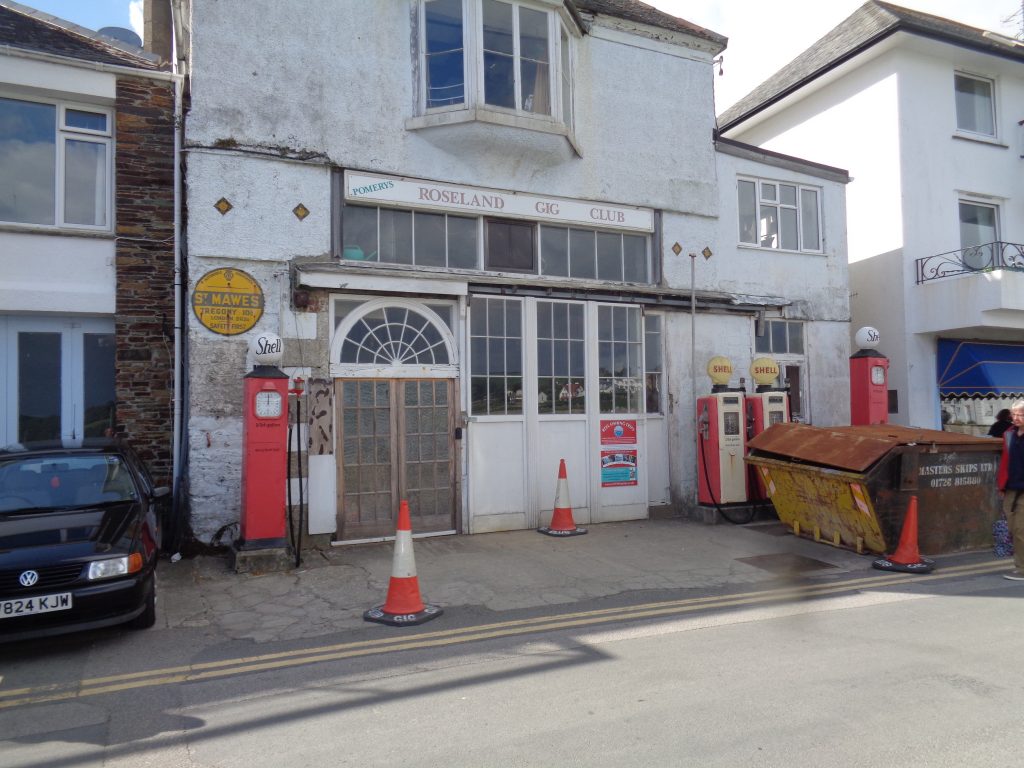
This building on the seafront in St Mawes, Cornwall, has a long and interesting history. The pumps were installed in the 1940s and were switched off in the ‘70s, when the fuel tanks started to leak. In 2008, a group of locals started to restore them and got a donation from Shell to help complete their work. In the pre-war days, the operators here also had a bus, and the back of the business was home to two Rolls-Royces (grand things for a humble fishing-port garage) and a Pontiac, sometimes used as taxis for local schoolchildren.
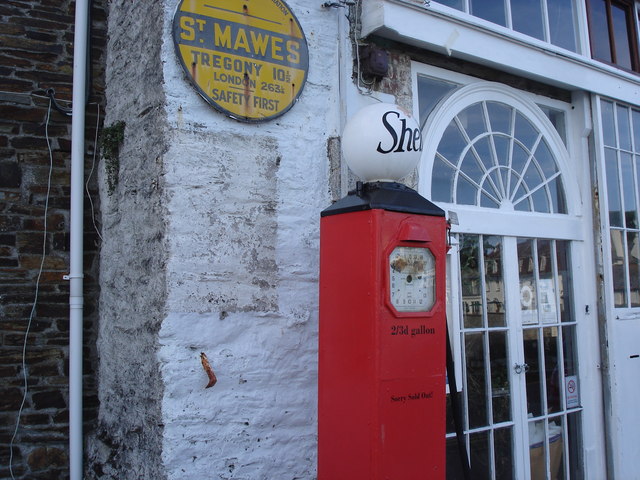
The building was also a carpenter’s workshop but has had many other uses over the years; it was a shed for processing pilchards, caught by the local fishermen, and a reading room for the American Red Cross. By 1970, it came into the hands of Brenda Pye, who owned the building, which was configured as a workshop where she made stained-glass artwork, and the middle floor became a music venue. When Brenda passed away, she left the building to the local community, who, I am sure, will find further interesting uses for this beautiful place.
Dartmoor Garage, Steeple Ashton, Wiltshire
The Dartmoor Garage in Steeple Ashton was, for many years, a National Benzole station and took its name from the field upon which it was built. The garage was built and owned by George Moore, who seems to have been a very resourceful man. The earliest petrol pump is believed to have been installed in 1930. To run the workshop and petrol pumps, George installed his own 50-volt supply with a generator and batteries. The generator was a 4.5-litre Lister engine driving a dynamo and the batteries were glass accumulators retrieved from the Odeon cinema in Trowbridge. If the lights dimmed or the pumps slowed, someone would go to start the Lister.
Water was supplied from a well supplemented with rainwater collected and stored in tanks. A local story tells of the water board repeatedly trying to make him switch to mains water. They asked for a sample of water and left a bottle. The sample was collected and tested and the water was condemned as unsafe. George told them that he had sent a lad across the road to one of the houses for some tap water and was delighted to tell them they had condemned their own water. During the Second World War, he ran three pre-war Austins as taxis, one of which was still running in the mid-seventies. A man of many talents, George took an interest in maintaining and repairing the Victorian heating systems in several local churches, and his pastime was bell-ringing. Although some people find the pumps unsightly, others think they act as a memorial to George Moore, a remarkable man.
Brighstone, Isle of Wight
Only the modern dialling code on the pump gives the game away because, otherwise, this could easily be anytime in the 1970s. (Thank you Martin Chamberlain, who took his old Maxi to Brighstone on the Isle of Wight and shared this nostalgic picture.) National Fuels had a loyalty scheme whereby customers could eventually get a Smurf figurine, often shown on display under a clear plastic dome in the shop. There was a hoo-ha in ’78 around some of them potentially being toxic after the marketing people at National ordered some from Hong Kong on the cheap. I tested one on my annoying little sister at the time. Production of the Maxi ended in the early ‘80s, the National brand met its demise in the early ‘90s but my little sister is still alive and well and working as an accountant.
Bensteads Cottage, Horsell, Surrey
Bensteads Cottage was built in Horsell, Surrey, in 1831. It operated as a cycle repair shop for many years before being taken over in the 1920s by Archie Benstead, who was then a mechanic and later made the place into a garage for cars. Benstead became a local councillor in later years, resigning when it was decided that a new road being built in the town would not be named after him, but he was a good egg, sponsoring hill climbs and cycling events. Earlier, he served as mechanic to land speed record holder John Cobb “The Fastest Man Alive”, who still holds the record for the fastest speed at Brooklands; 143 mph. Cobb then went to Bonneville salt flats and broke the world land speed record, before coming a cropper attempting records on water at Loch Ness. Archie Benstead went back to cycling. In the dark year of 1943, Archie Benstead reminisced; “memories of past happy days mean much when we can refresh our minds with such thoughts as the incident at Romsey when we had beer and sausage rolls with the village Policeman on an all-night ride.” There’s still a garage operating next door to Bensteads Cottage today.
Redford Garage, Midhurst, West Sussex
Redford Garage fights a cyclical battle with the growth of ferns, brackens and blackberry bushes, which ebb and flow with the seasons, endlessly swallowing and revealing sheds and cars and stuff to be fixed. There are pumps, one still dispensing red diesel, and a large sign almost lost to the trees. And cars; a Saab clad in moss, a Discovery with UKIPpy stickers, a Rover 75 and others in various states of decay. I got chatting with the owner, who explained that the pearlescent white XR2 was awaiting a reshell. It looked lost to me, MOT-less for a decade, and then we chatted about the Mitsubishi Evo squeezed behind the pumps. It belongs to the owner, who had just parked it there after an MOT fail. It needs springs and brakes, apparently. It looked like it had been there for many, many seasons. It dawned on me that this place is timeless. The Evo failed its MOT five years ago, according to the MOT checker online. Night and day and weeks and years must merge in this peaceful spot. The chap was in no rush to get rich, no queue of pushy customers demanding a courtesy car and a valet, just a slow, steady stream of interesting things to fix… sometime.
John’s Motors, Fosters Booth, Northamptonshire
John’s Motors, on the A5 in Foster’s Booth is embracing the growing love of motorsport and cars from an era where every journey was an adventure. You won’t get your EV topped up here. A third-generation business, they prep cars for historic motorsport events and sell cars your Dad longed for new but could (probably) never afford. I’d have the Mk X Jaguar and the Triumph Spitfire outside. The A5 may no longer be the main north–south road around here, thanks to the M1, but traffic is busy and this place has transformed from a general garage to one that enjoys a healthy helping of nostalgia.
Are there hidden filling station gems you know of? Share with the community, in the comments, below.
Read more
Living in a box: The rise, fall and resurrection of the red telephone box
Freeze Frame: Routemaster changes London’s roads forever
The Flying Wrens: All-female dispatch riders of WWII

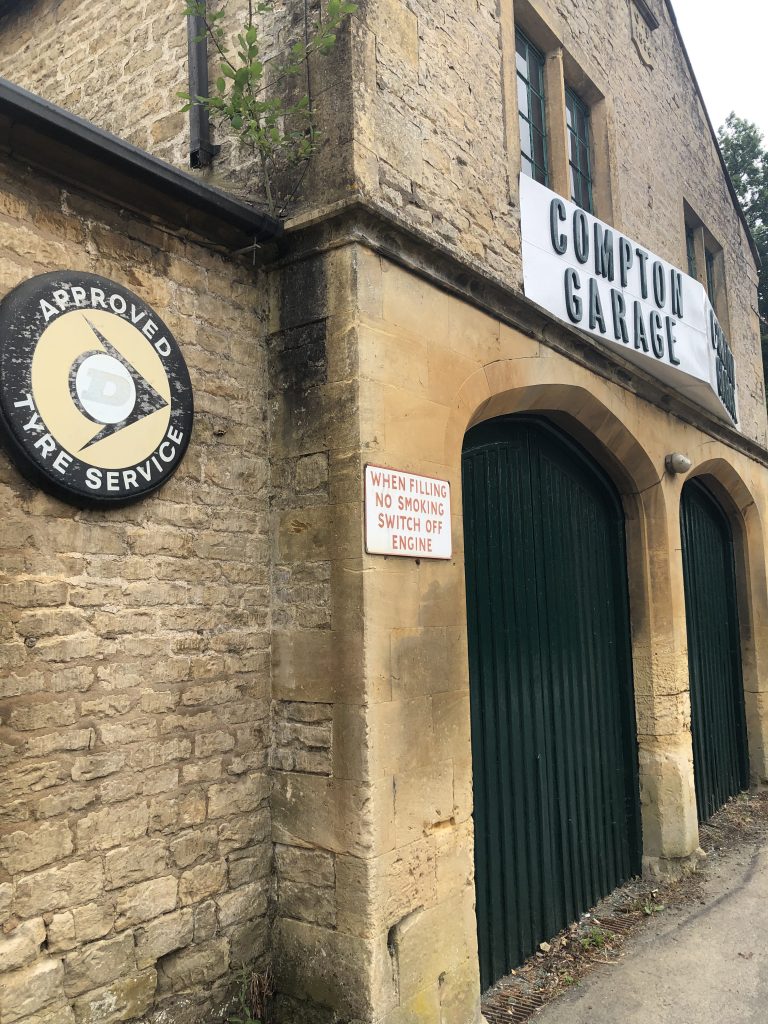
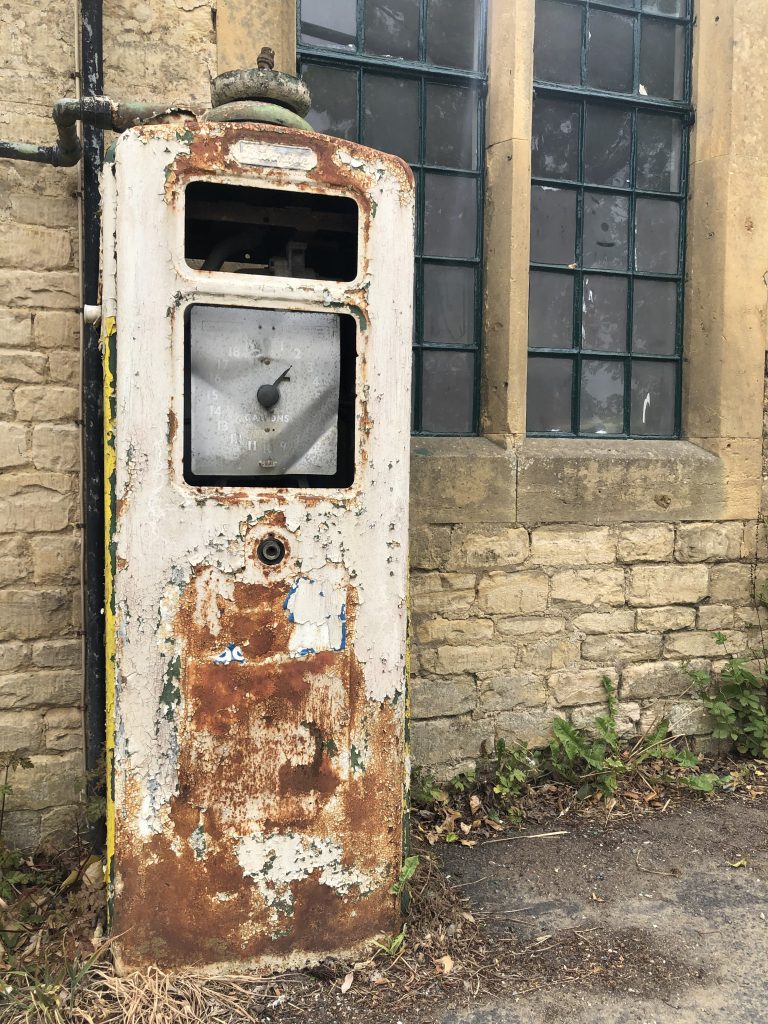
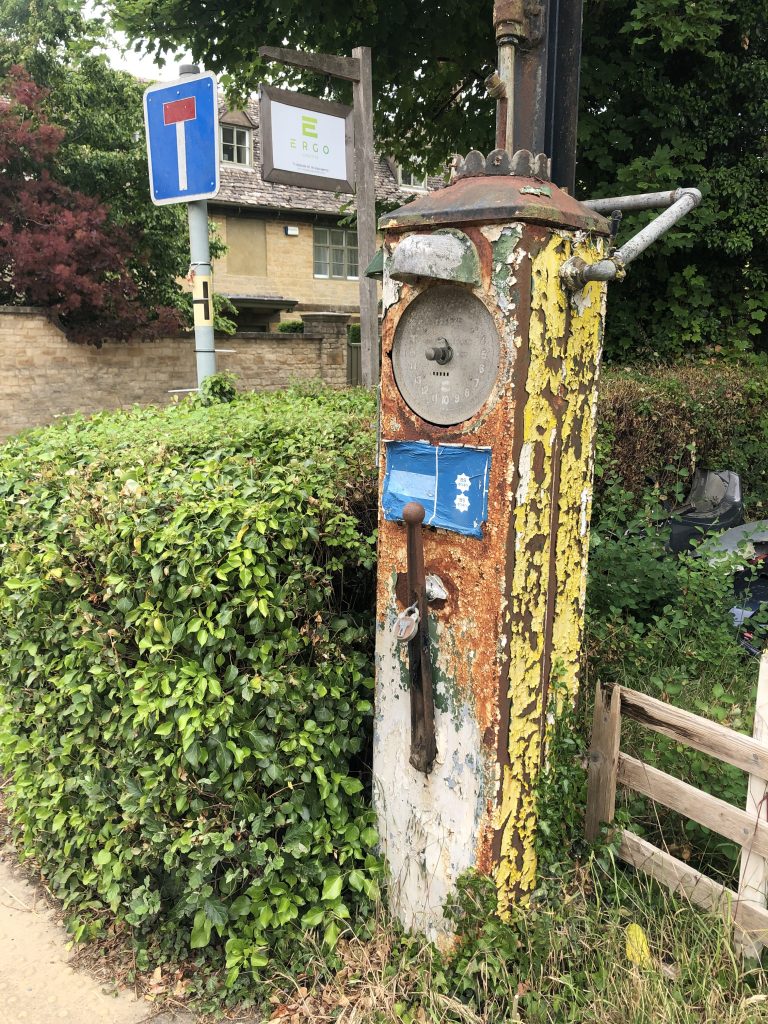
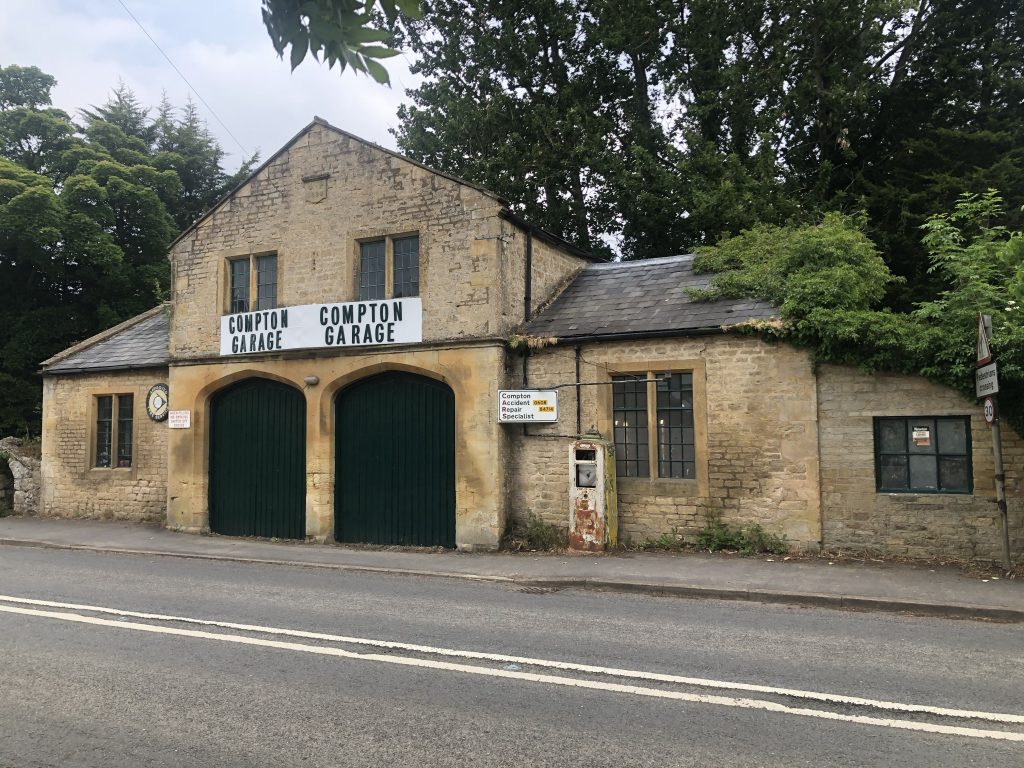
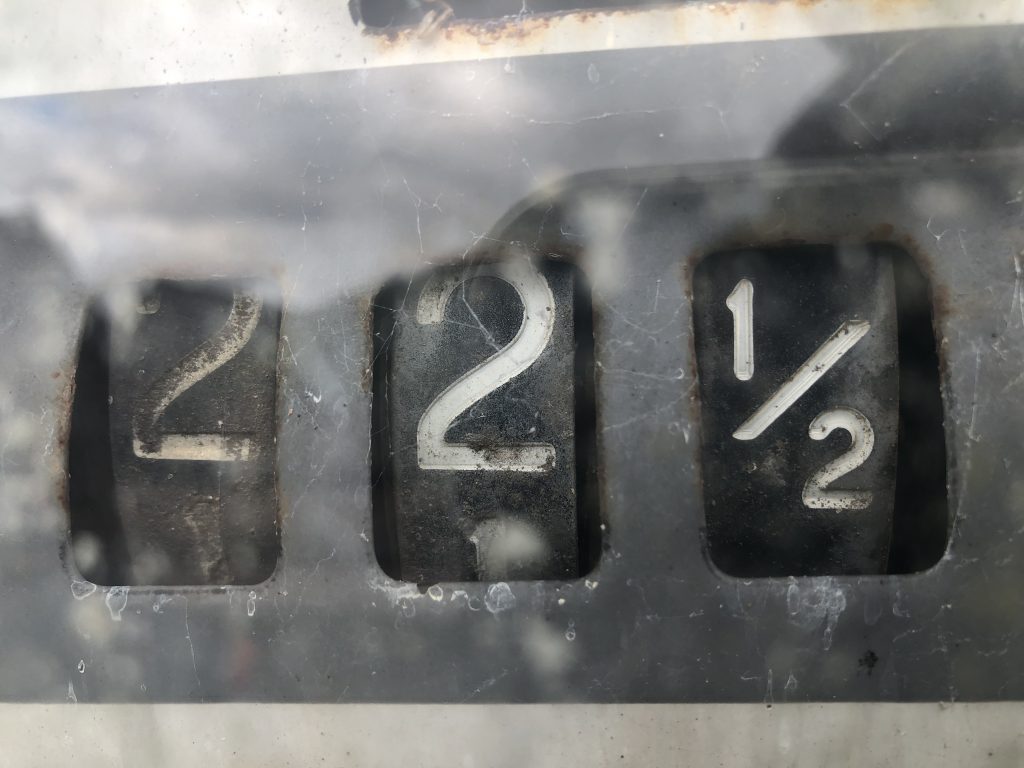
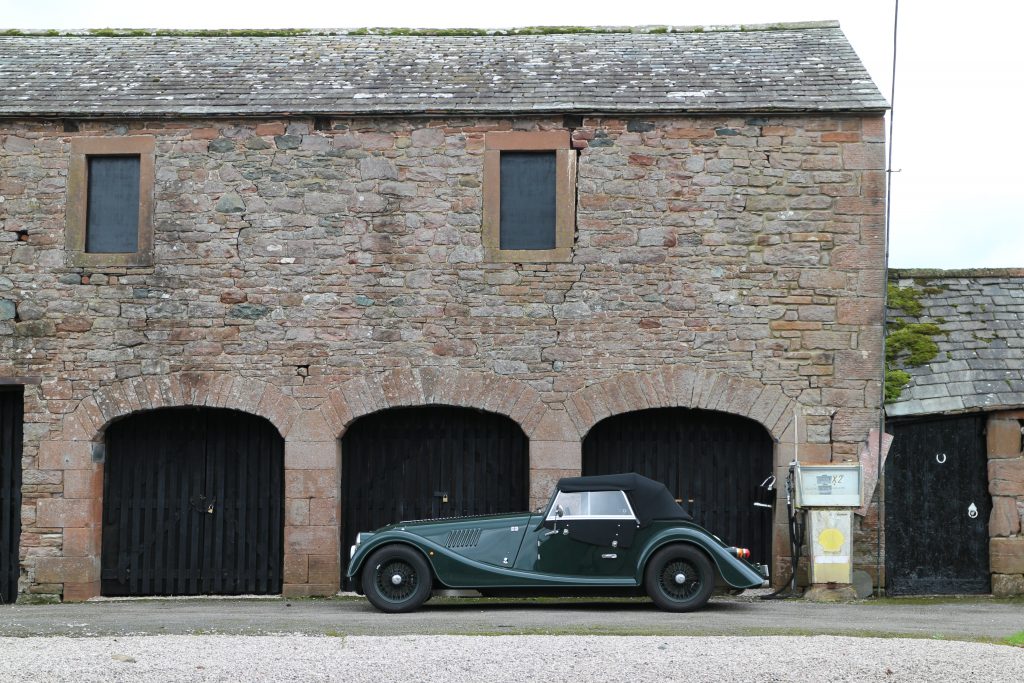
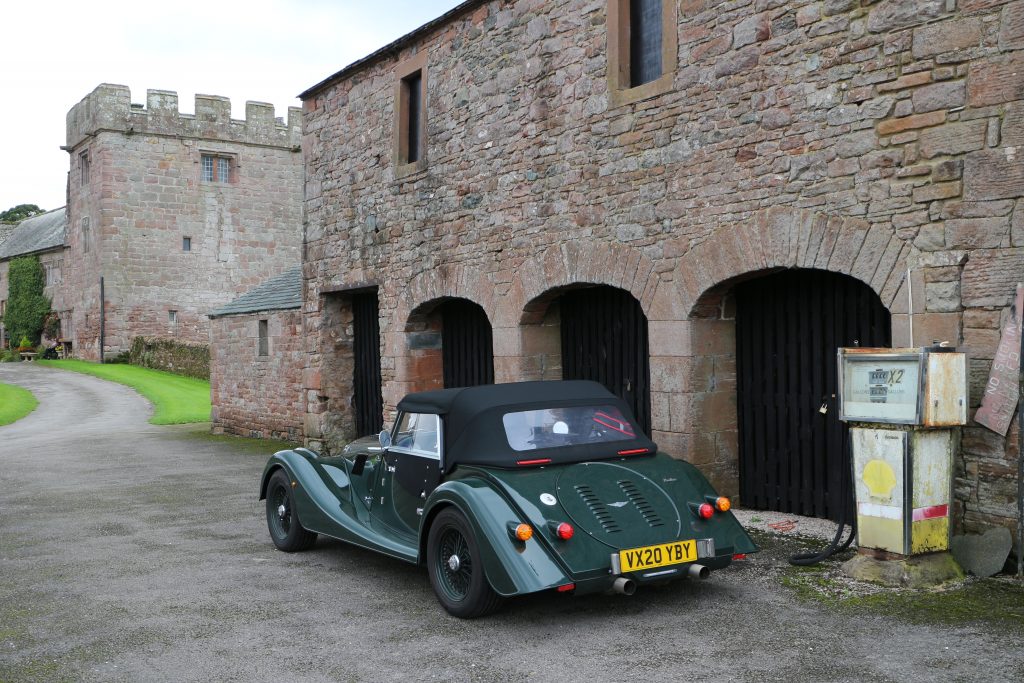
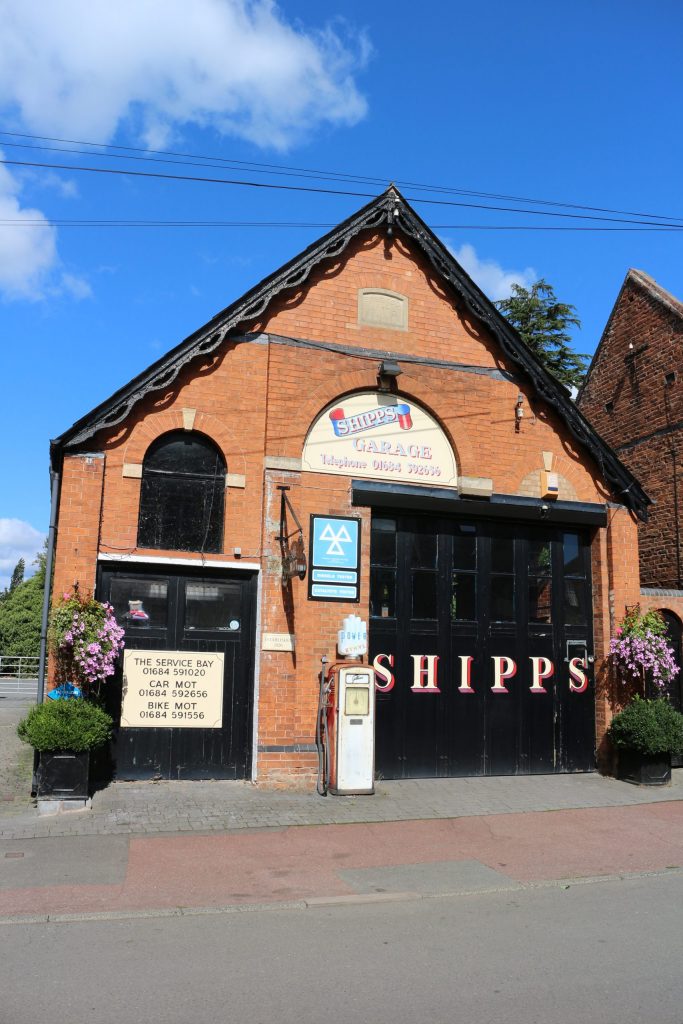
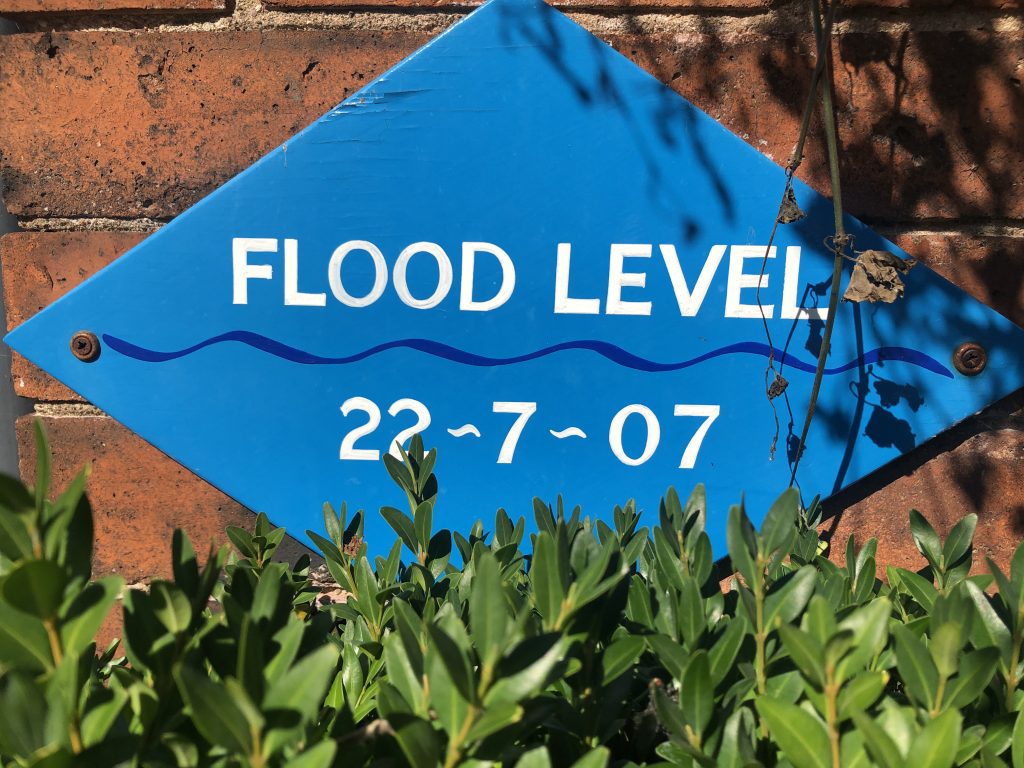
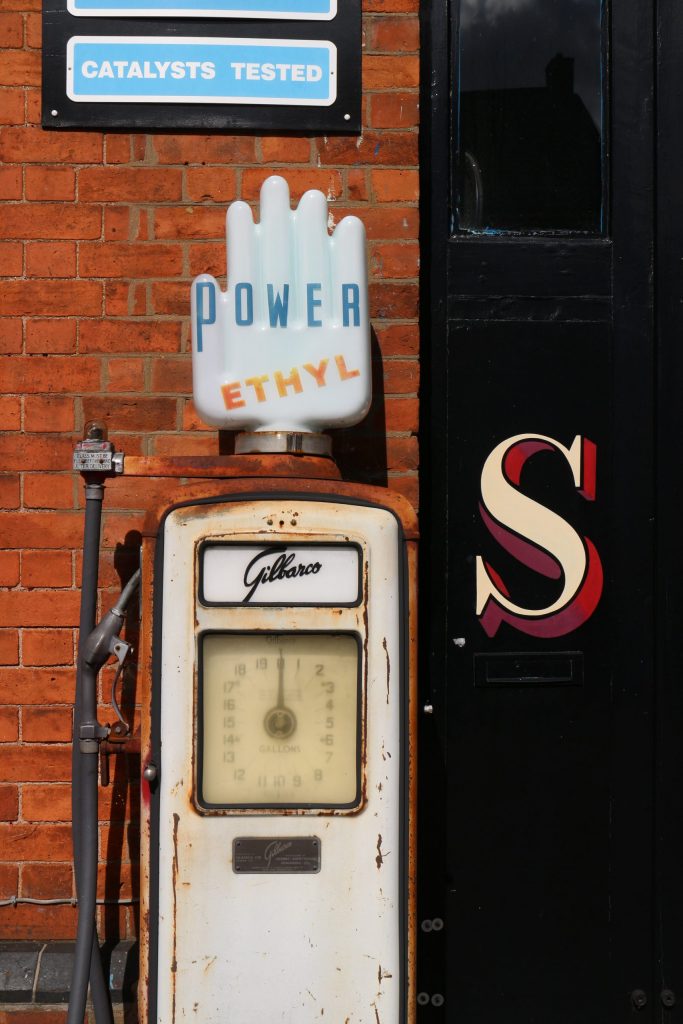
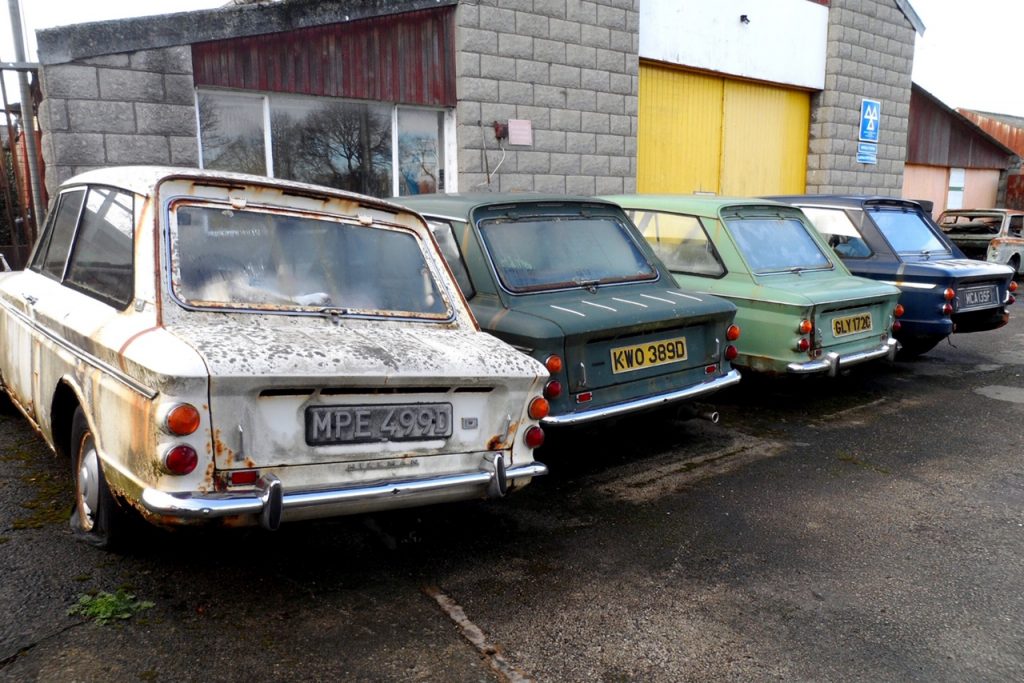
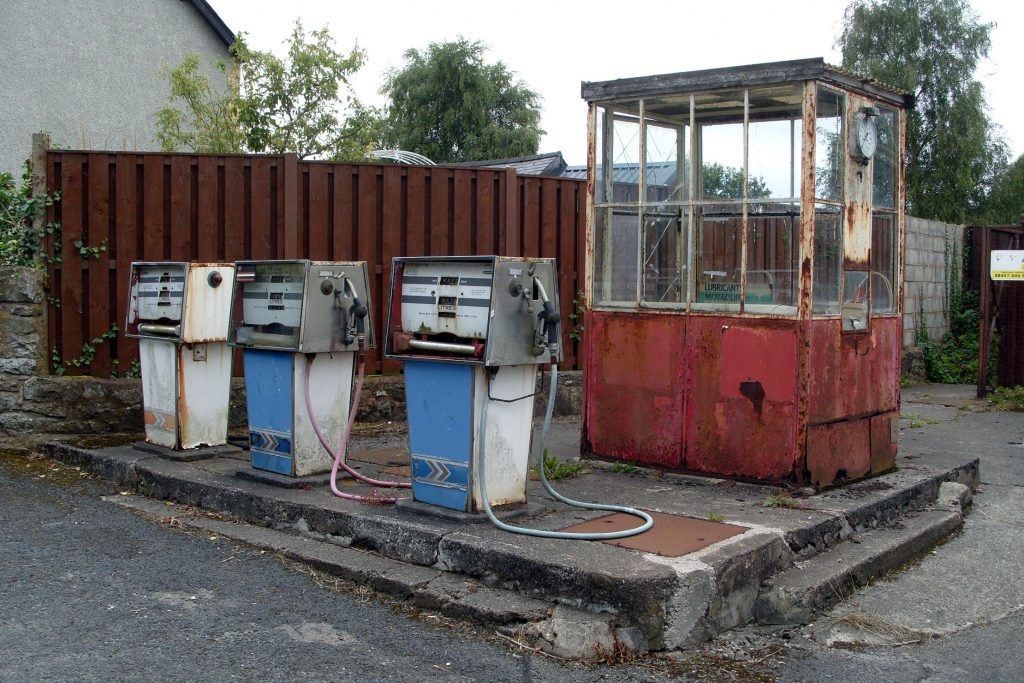
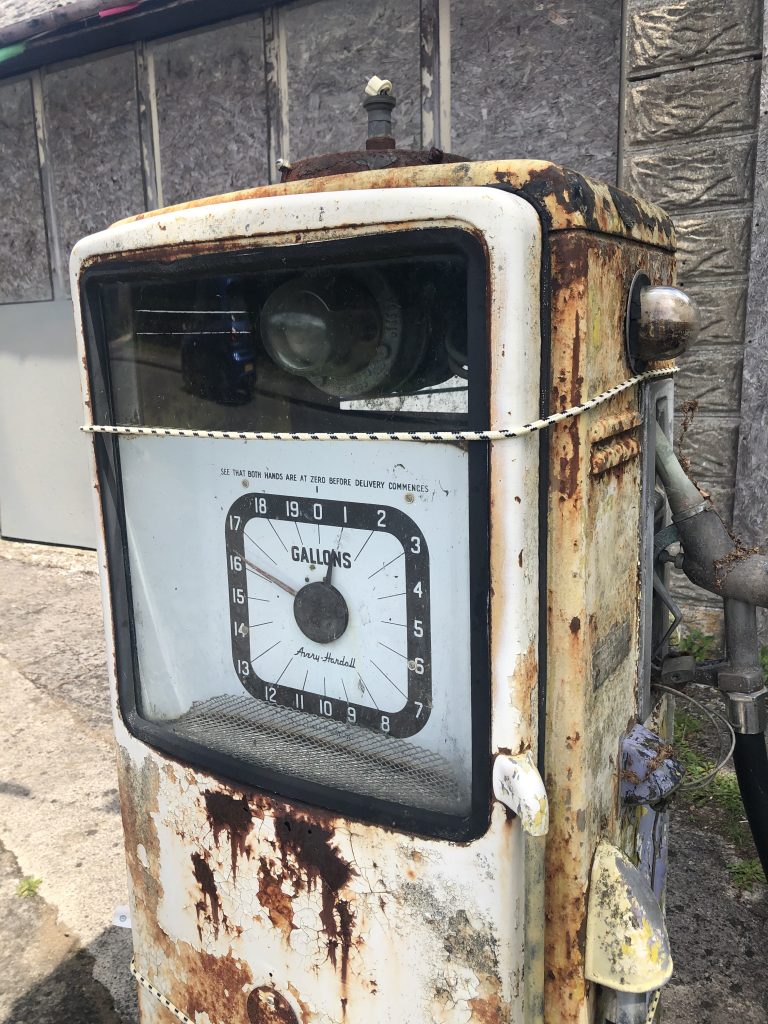
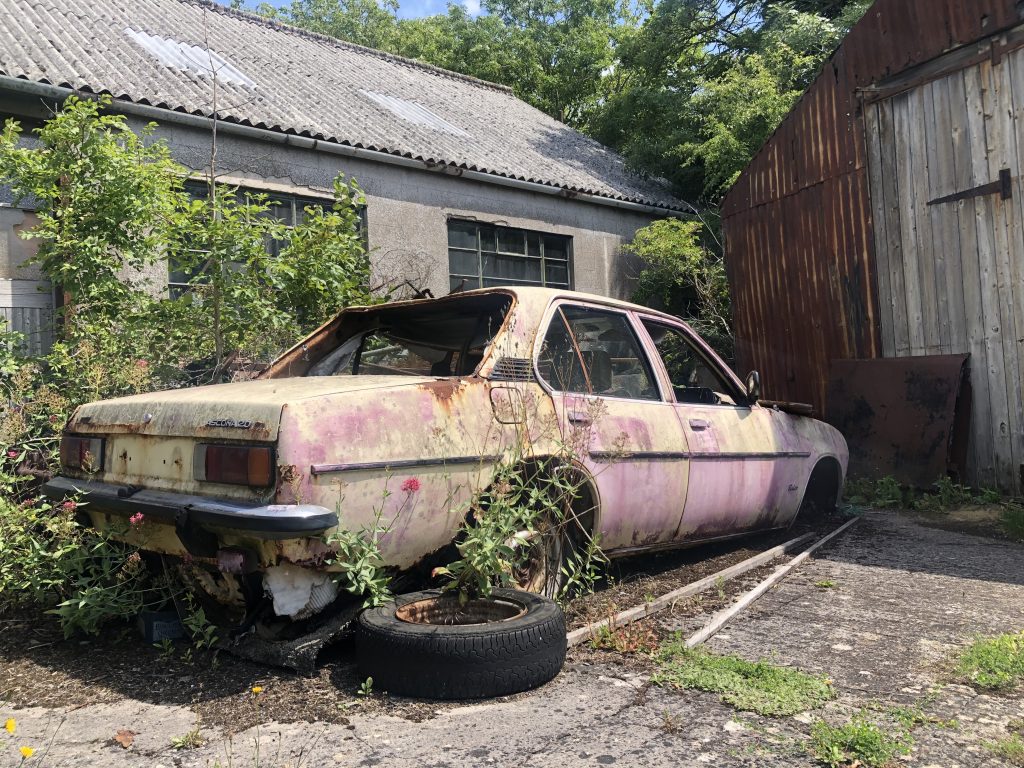
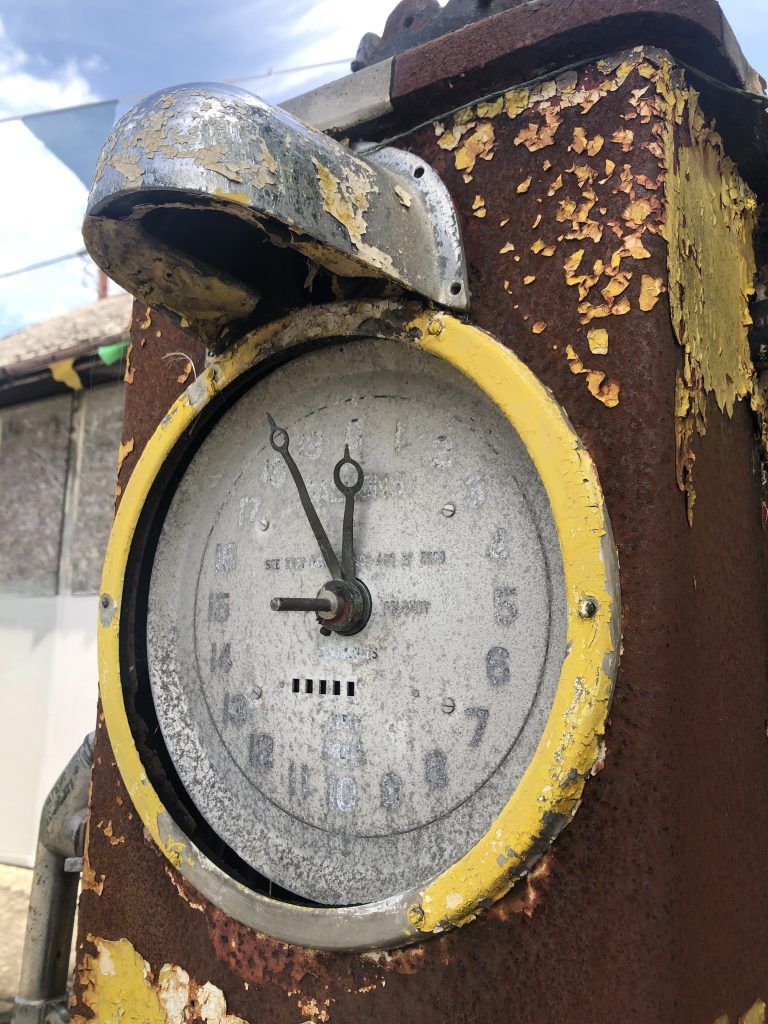
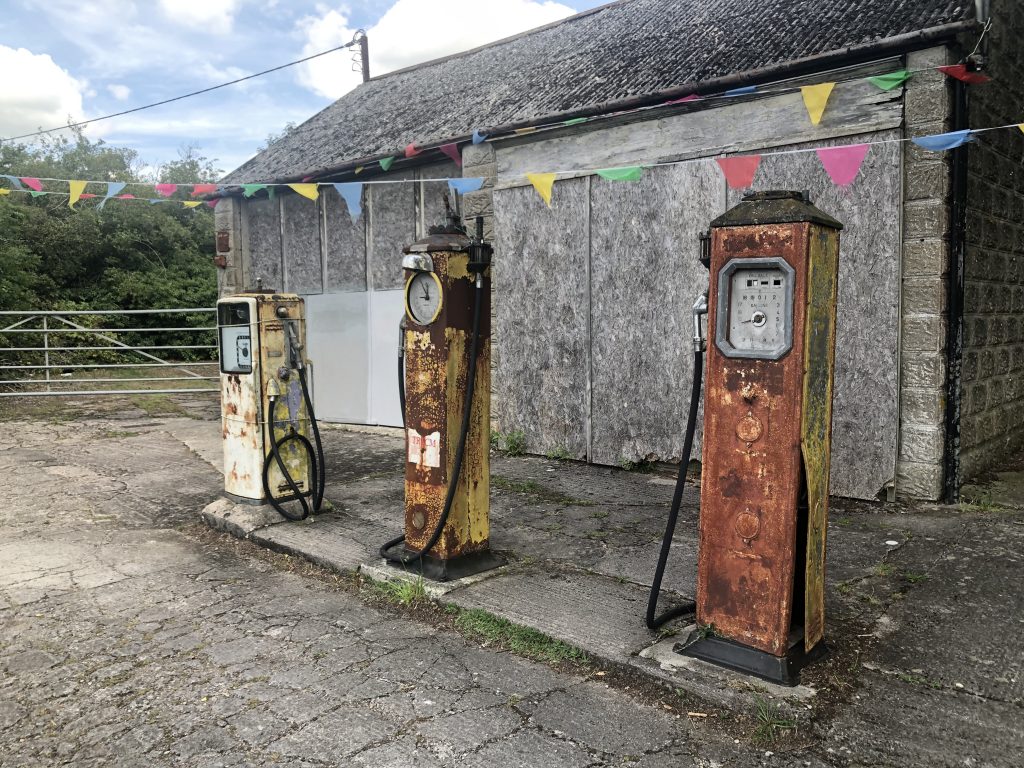
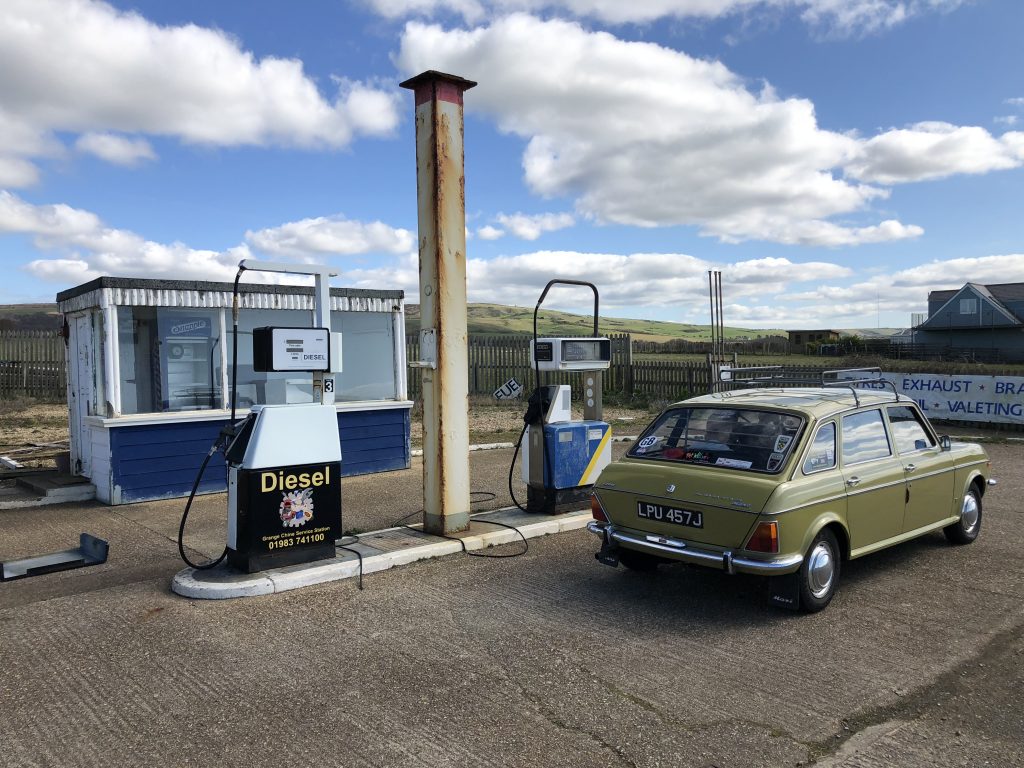
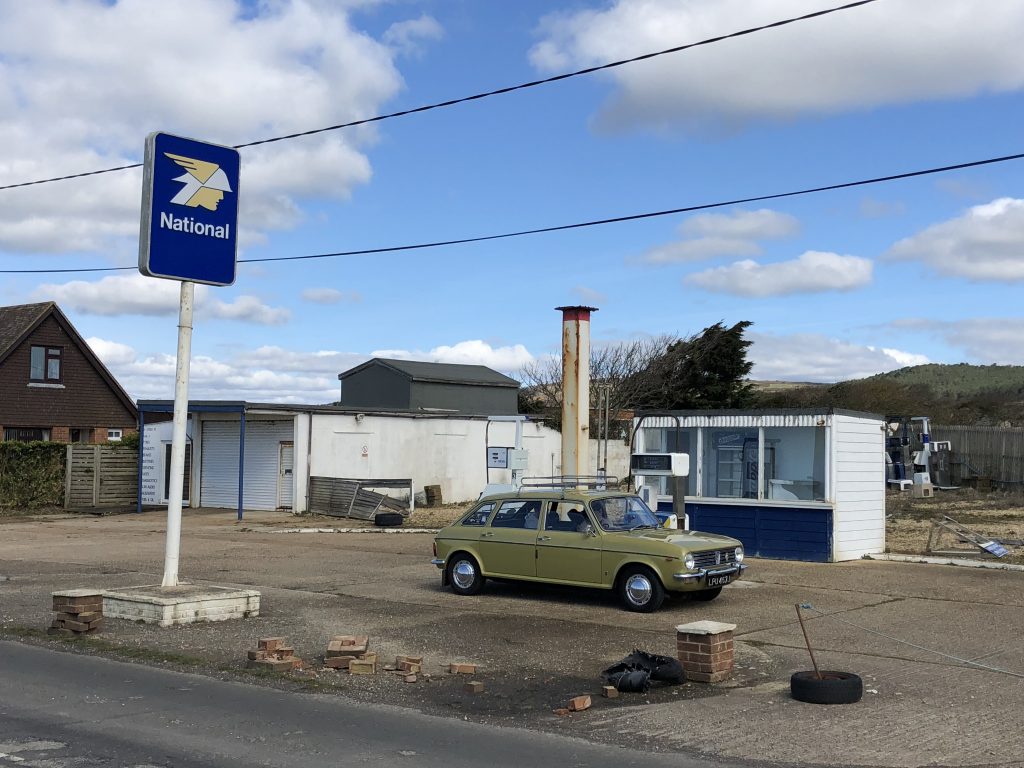
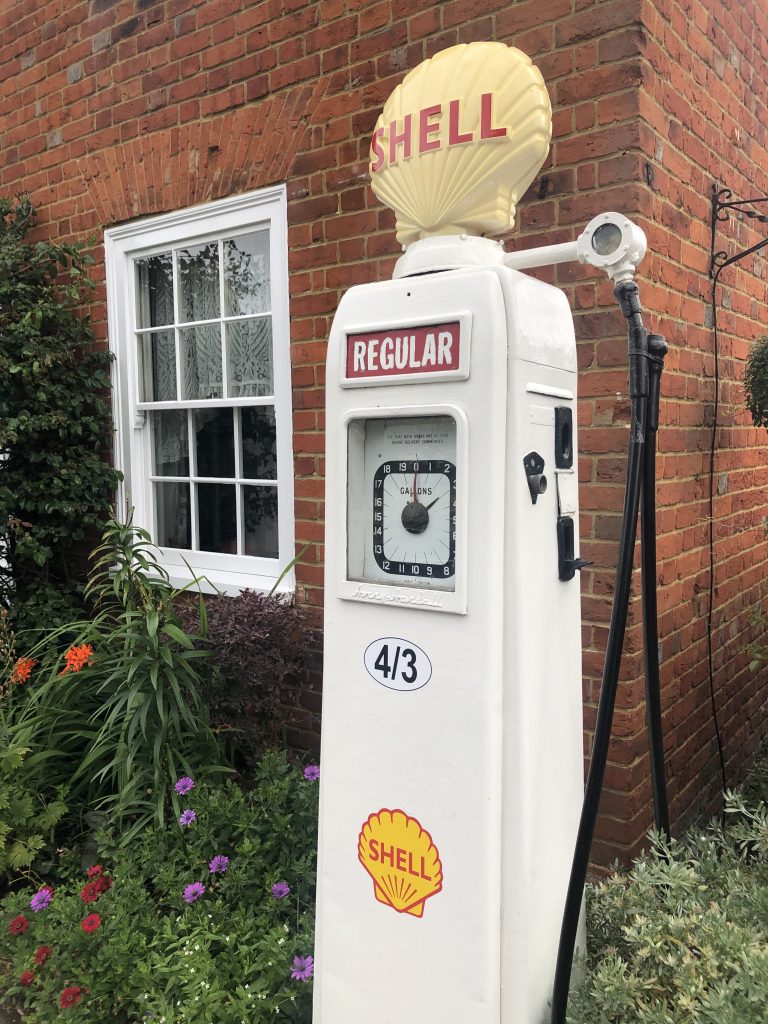
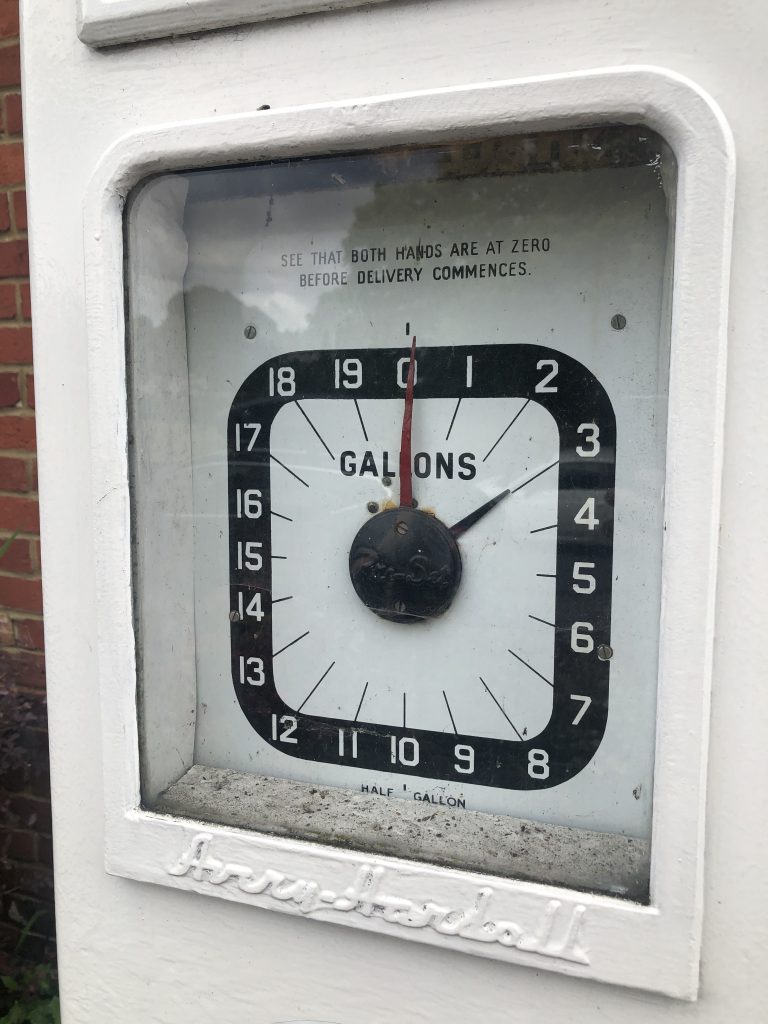
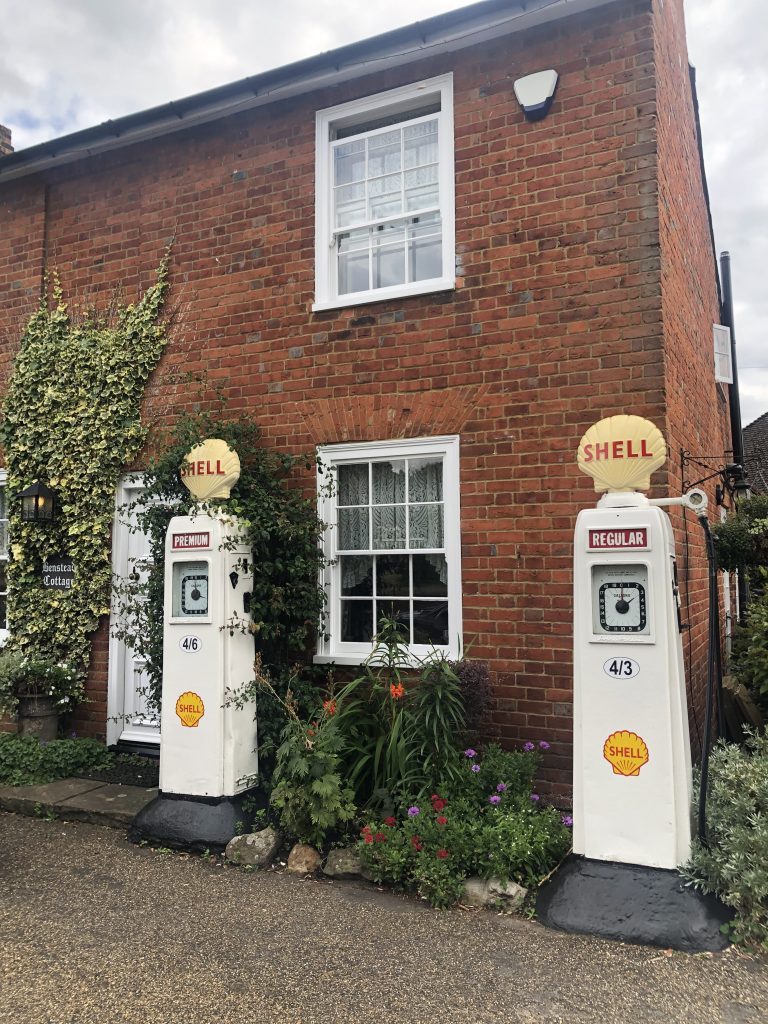
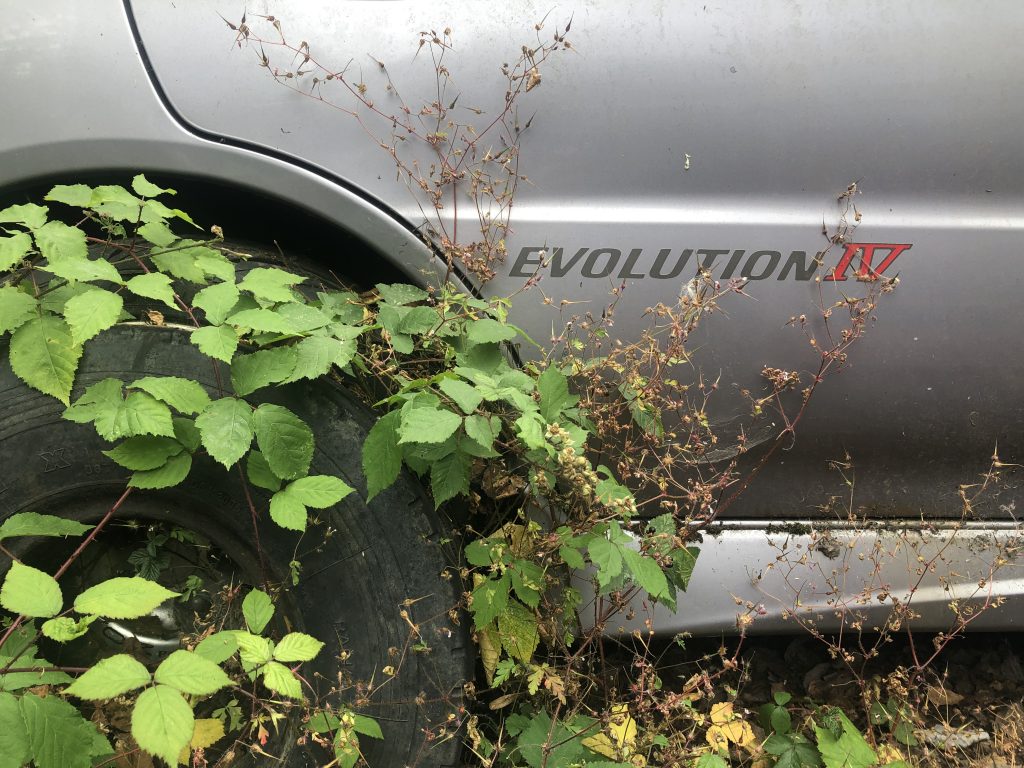
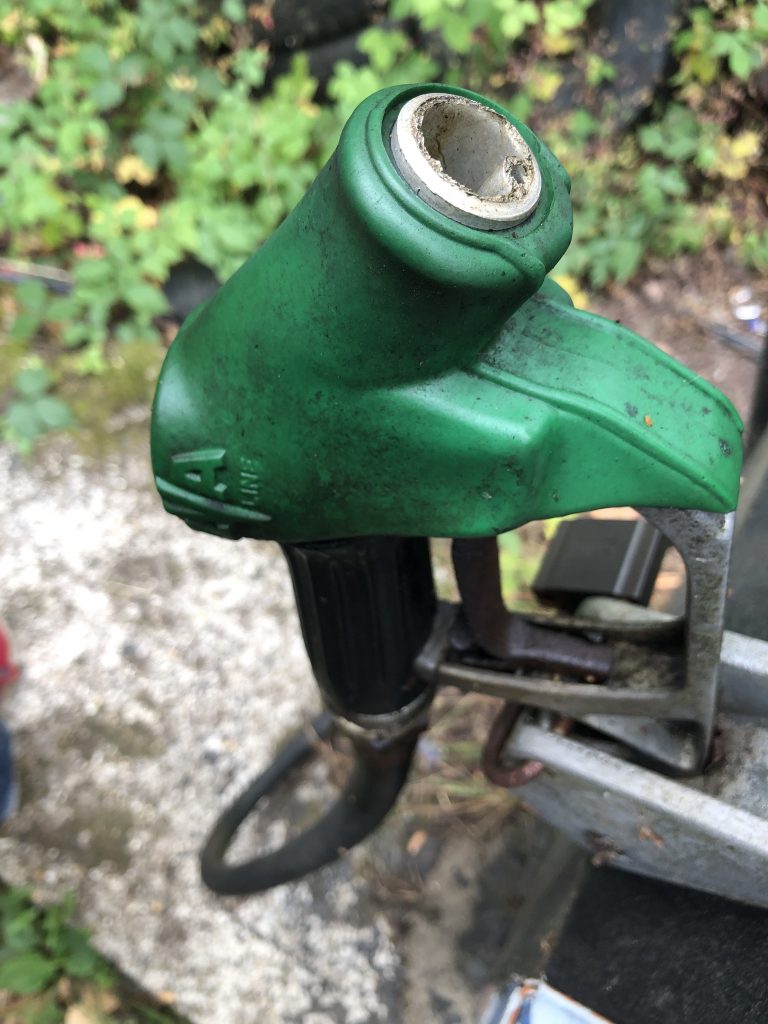
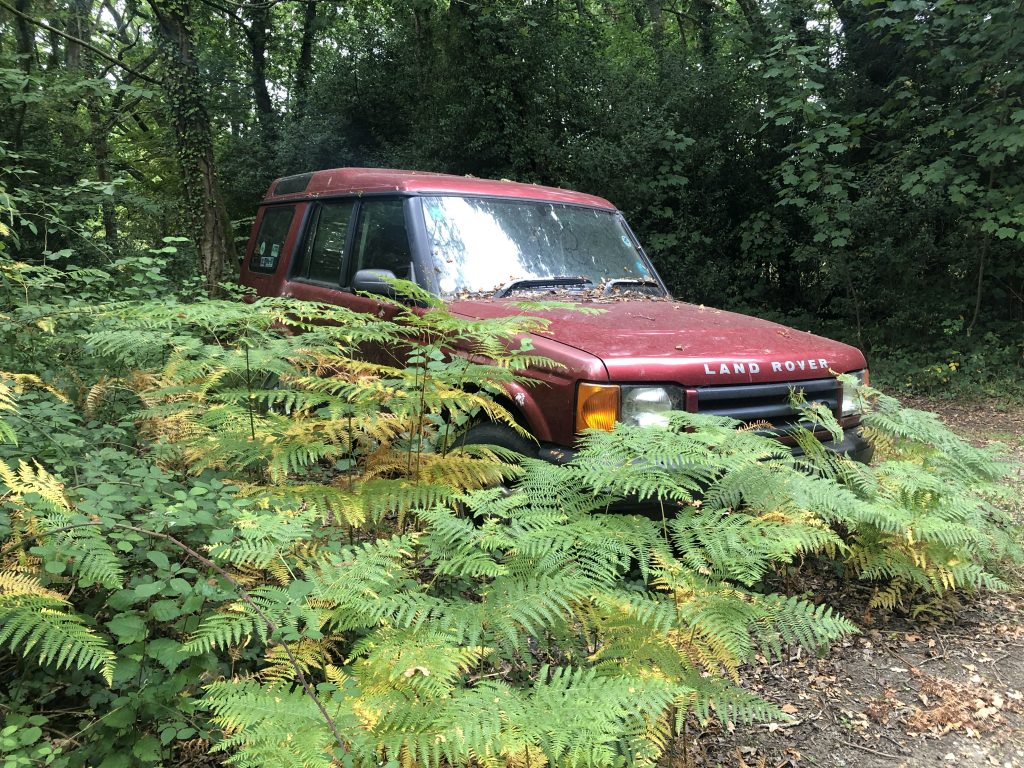
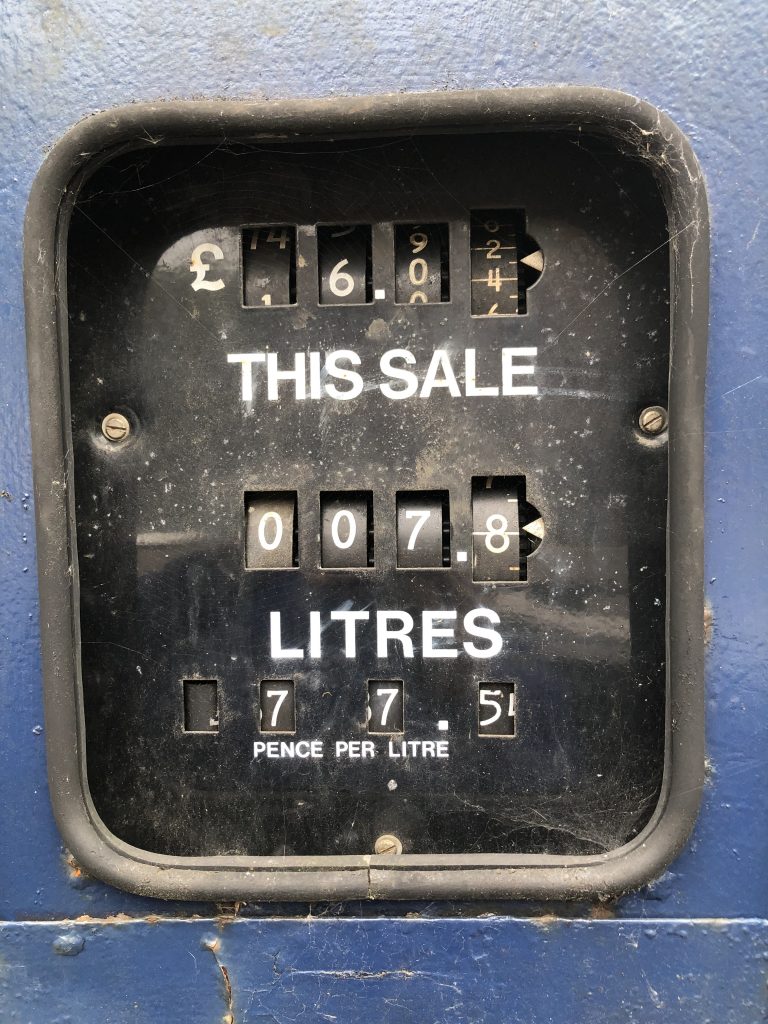
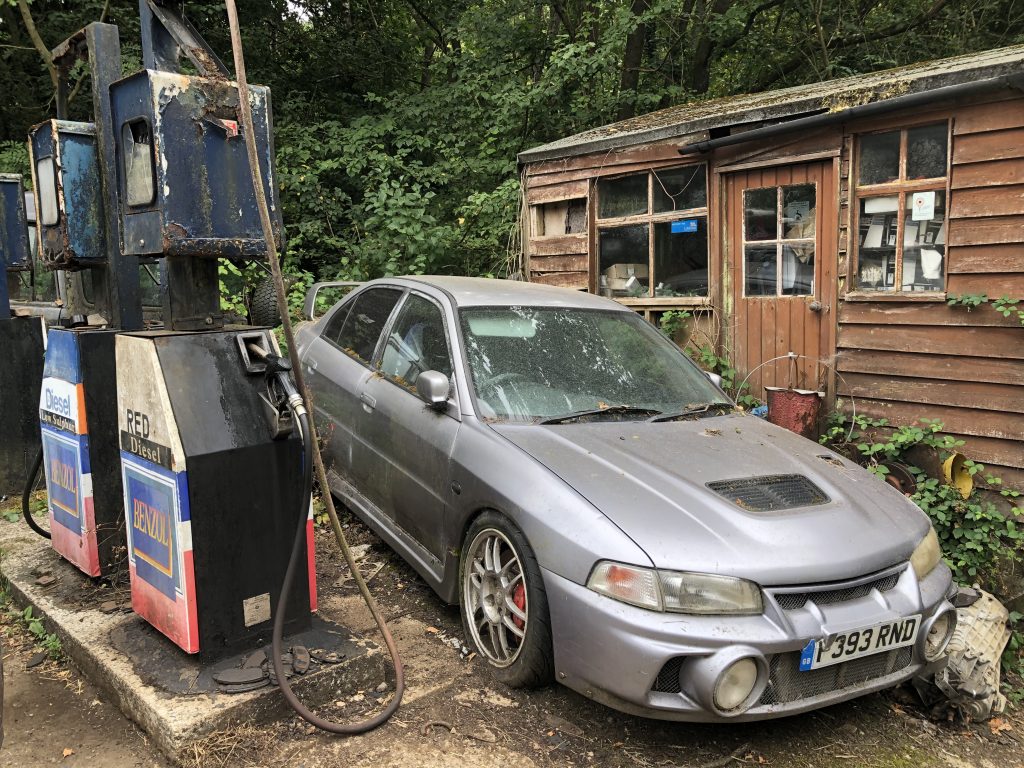
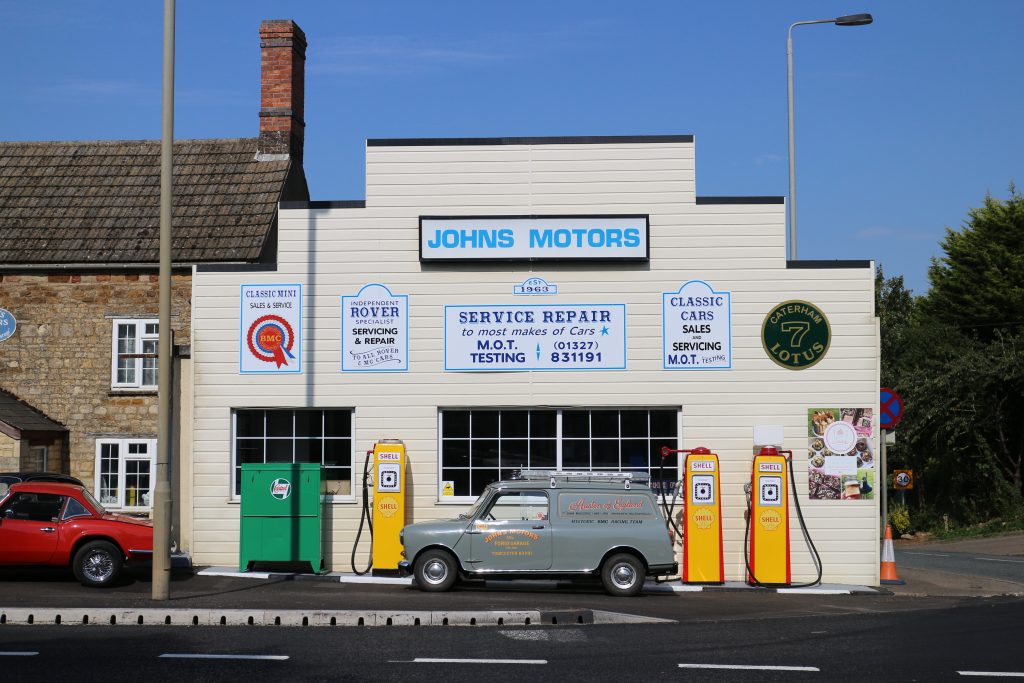







This isn’t really Britain is it. It’s England and one Welsh station.
And your point is? If the author had called it England then there would be uproar from the Welsh, damned each way!
I remember Shipp’s Garage well, I stayed with the owner for some weeks in the 50s. Bob Shipp was also the volunteer fire Chief as it was opposite the then Fire Station. I do hope it is still in business.
There are other sites not included in your article. There’s one in Wareham near the station. Whilst wonderfully nostalgic, it should not be forgotten that the underground tanks should now be filled with concrete slurry and have probably set hard.
Shame those Hillman Imps appear to be rusting away.
I note you’ve written several books about old petrol stations, each dedicated to a different region of the country … so the one I’m going to suggest is probably already included in Welsh edition.
Llysworney Garage Ltd is still (as far as I can tell from google) a working garage which sports two petrol pumps and a Texaco sign on a tall pole.
Great image of it on google maps.
I found this very interesting and makes me think of our local village in France.The local council there operate a self service unmanned filling station, which seems to work fine. It is situated close to a junction ( roundabout) but not near any other businesses. There is no other place to fill a vehicle within 7-10 km.
As is normal in France the price of fuel changes quite often and automated here. Perhaps there are places in the UK that this approach could work?
Archie Scott-Brown’s old filling station and workshop was situated for many years at the side of the A604 (now A14), near Swavesey. Allowing him a decent stretch of straight road for testing his various Listers, for several years now the garage’s fortunes have been very much up-and-down. Threatened with demolition many times, it spent a decade as a hand car-wash venue until two years ago when the new A14 opened to the south of the old carriageway, leaving it accessed only from the old road, now serving local traffic. Fearing it was lost, I explored the area to find it still extant but now revelling in a bright blue colour scheme proudly proclaiming it to be ‘The UK’s #1 Hot Tub Showroom’. How the mighty can fall – photos available, but can’t post here.
Very enjoyable subject, took me back in time. I own one pump which is in my garage as a feature a 1946 Avery in Shell livery with a Shell working globe. Many years ago once owned a Hillman Imp (NTB 512C) suspect long gone by now, not brilliant but a had a wonderful engine.
Have a look at Stiles Garage in Battle, East Sussex, family owned and still very much in business, friendly, helpful and trustworthy. The workshop is still adorned with old signs, such as for Smith’s Batteries.
Jeffrey, thanks. Not too far from me so I shall venture in that direction…
There is a great group on Facebook called ‘The Golden Days of the Great British Petrol Station’ with fabulous pictures of old filling stations and pumps. Would highly recommend. You can find it here:
https://www.facebook.com/groups/257490574710302/?ref=share
Very interesting reading and love the old photos. Just for the record I’ve still got slightly blue skin from the smurf incident!
Shipps Garage is still trading as a workshop and MOT station but not serving petrol
As you say, the first filling station was in Aldermaston. But, I’m told the Lord of the Manor thought it would be unsightly so would only allow a pump hidden behind a brick wall. The only visible part was a foot-square hole in the wall through which the hose was accessible. When the wall fell down a few years ago, it was rebuilt complete with the hole.
Oh, how little the author knows. There are loads of Hillman Imps around – I’ve worked on 2 this past month ! Get to their annual National meeting (when its allowed) and you’ll see upwards of 300 9f them all together .
The St Mawes Garage misses what was the Austin Dealers on the approach into St Mawes
I used to visit the area several times a year and failed every time to buy the “Austin…You can depend on it” Sign hanging in the long closed showroom.
Probably I became a nuisance to the building owner who, at that time rented out the old workshop to a repair garage but the Pumps were long gone!
Its probably all in Landfill by now, lets hope not!
Bensteads Garage brought back happy memories of long, long ago. Not the garage but the price on the pumps. In late ’63 I bought a 1954 Jaguar XK120 DHC for £70. It was missing a spare wheel, had a blowing exhaust and the hood was just about done for. After inspection and a road test up and down the adjacent A40 my friend, a skilled mechanic and garage proprieter told me to give the seller the money and we set off into the dark winter’s night, 145 miles eastward. Helping him with small tasks in the garage in the evening, a neighbouring shop blind manufacturer and a local Jaguar agent/racer, all the above faults were quickly remedied at little cost and I set off onto the open road, just like Mr. Toad with no upper speed limits to impede my progess. I travelled a lot for my company to customers spread widely around the country, virtually all on A class roads. A joyful experience for someone just approaching their mid twenties. Travel expenses were paid by the mile with add-ons for car, size of engine, meals and over night stays etc. These were paid separately at the end of the month and the accumulated total turned out to be sufficient to cover all my motoring expenses, insurance and maintainance plus enough left over to cover all my private mileage, nights out with my girlfriend and other such luxuries. He was a very generous employer! It all lasted until 1974 when the rigours of daily use and the enemy of all Jaguars at the time, rust, brought it all to a sad end and it was quietly put to bed. By then I’d moved on and had a company car and the monthly windfall vanished. End of an era. I’ve kept logs of all my old cars and every now and again I pull them out and reminisce. The first entry in the Jag book is fuel: 14galls, oil: 2pts, To Chatham £3/10/6 inc sundries?
All the way, via Gloucester, the A40, S. Circular and then down to Chatham with these similar garages all the way. And also lovely old coaching inns with proper ale (small quantities!) which I could enjoy outside in the sun (in summer time) watching todays classics rolling past on the adjacent highway. Heaven!
For “145 miles eastward” read “145 miles westward”. Ooops.
There is also a wooden built garage / workshop plus pumps on the main road through Much Wenlock in Shropshire. It is worthy of a look, not been used for years and would be so interesting to see inside.
Llwydiarth Sub Post Office near Welshpool with Anglo pole sign and wooden cabin – needs a preservation order
Back Lane garage Ramsbury – Fina with a variety of Avery pumps
Glanaber Garage
Storr’s of Wainfleet
The featured Johns Motors is local to me on the A 5 at Fosters Booth, what is now the rear yard was my Grandmothers house and garden, sold when she passed away. I think Johns Motors was the Reliant dealer in Northampton Prior to moving to Fosters Booth.
I remember helping Mr Gannon ,who owned it prior to John’s Motors, to serve petrol on busy Silverstone race days before the M1 was built, by winding the early “clock style”petrol pump hands back to zero ready for the next customer and below earlier memories from my cousin Tony.
Yes indeed, Gannons Garage, where the large window is now was the wide entrance with sliding wooden doors, the other window was much smaller too.
I used to sit where the CASTROL oil cabinet is now in front of the garage on one of grans wooden kitchen chairs taking vehicle number plates and watching the never ending lorries hurtling up and down the A5.
The brand new lorries straight from the Birmingham factories with no bodies! just a wind break of packing case sides lashed together at the front behind the engine to give some protection to the driver who was dressed the same as bomber crews were during the war, waterproof one piece flying suit, flying helmet and goggles with large leather gauntlets.
There used to be convoys of about 10 of these new lorries one behind the other heading south for Southampton and export abroad.
Mrs Gannon used to bring me out bread and cheese and a drink of lemonade sometimes as I was there most of the day.
I am talking 1954 here of course when we used to come up in the OPEL CADET before dad got the Flying Standard in 1956.
Memories are made of this.
OK! Nothing too special about the service station (except that it still advertises “Super” which is leaded petrol). What is interesting is the kerbside service which still existed when last visited pre-Covid. Glenville, Ireland.
https://www.google.com/maps/@52.0440362,-8.425752,3a,75y,120.08h,89.05t/data=!3m7!1e1!3m5!1sMtvM4Zv_XSugzI-iB8tP5A!2e0!5s20190701T000000!7i16384!8i8192
Nice article (similar pics to above, but in Ireland) – https://www.irishtimes.com/life-and-style/great-gas-a-history-of-modern-ireland-in-old-petrol-stations-1.4154107
There is a petrol and diesel pump on the footpath each side of Bunners hardware store, Montgomery. The pumps are at the back of the kerb and the pipes are suspended over the path to fill cars at the kerb.
The Elva car company started in a garage on London Road, Bexhill, don’t know if they had gas pumps but their second location at Sedlescombe Road North in Hastings was pictured with Esso pumps out front. Do they still stand?
What happened to he petrol storage tanks later ?
Hi, there is a nice one at “Blue Bell Inn” brompton, Churchstoke, Powys. Has been out of use for at least 50yrs. Quite iconic on a cross roads, in front of the old pub and accompanied by an old “lumpy” but alive oak tree and a mounting block. The Land Lady died last year and the property is very run down. Fortunatly it has been purchased by a local business who are intending to renovate and bring it up to a usable pub and as it is literally built on top of Offas Dyke (planning permission in progress) to make a bunk house. The old pump will remain.
Does anyone know of any that are max couple of hours drive away from London?
Hi I have a garage forecourt kiosk from the 1950s , made by the Hawker Group , all aluminium, 8 sides. Would anyone have an idea what it’s worth ?
Where is Scotland in this list of ‘British’ petrol stations?
Funny you should say that, Linda. A separate list is in the making. Watch this space…
Excellent. Can you tell me if it will it include anywhere between Edinburgh and Braemar on or before summer 1911? Asking for a novel I’m writing.
Me and my husband run an old fashioned petrol station in the the north of England in a down in the the valley of Esh Winning County Durham. My great great grandfather bought it from a family in 1946 and as fifth generation I continue to run. We are still an attended forecourt serving our local community in all weathers. Customers love the fact they don’t have to get out their cars. People comment on the old building and we’ve kept some of our vintage pumps. I don’t believe there are many attended forecourts around now but we love our job and it saddens me that there’s no many of us little independent garages around anymore.